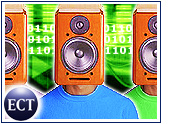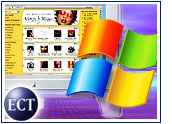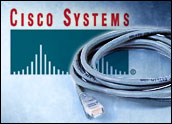
Now that Apple’s iTunes Music Store (iTMS) does Windows and Napster has been rehabilitated, more people are starting to change their music-buying focus, moving from old-school CDs to new-generation digital formats like AAC (Advanced Audio Coding) and WMA (Windows Media Audio).
However, the onset of legal music download services has brought a new issue front and center: sound quality. The bit rate of an iTMS AAC file is 128 kilobits per second (kbps) — just a fraction of the 1,411 kbps “uncompressed” standard used for CD, WAV and AIFF files.
Heated arguments have erupted about which compressed codec — WMA or AAC — sounds better and about whether either one can reasonably stand up to its CD equivalent. As GartnerG2 research director Mike McGuire told the E-Commerce Times, “I don’t believe that people commoditize sound the way they commoditize 99-cent music files.”
Are those 99-cent files worth the price if a codec is not providing CD-quality sound? Once the initial wave of excitement about legal music downloads subsides, will sound quality become a hurdle for companies seeking to lure consumers to this new market?
Who Can Tell?
While music file-distribution companies, such as Apple and Napster, admit they are selling so-called “lossy” codecs, which remove certain details from a file in order to compress it, they are quick to add that the difference between their files and a CD is minimal to the human ear.
“The beauty of these technologies is that they use psychoacoustics to remove information superfluous to human hearing — information most ears are not sensitive enough to pick up,” IDC senior analyst Susan Kevorkian told the E-Commerce Times. “Most mass-market consumers find [the formats] perfectly acceptable and … will not be able to tell the difference between WAV and Dolby AAC, WMA or MP3.”
In any event, online music stores likely will not rush to improve the bit rate on files they are selling, Kevorkian said.
“It’s an added expense for an online music store to reencode at a higher bit rate,” she noted. “Reencoding is very secondary to the [store’s] priority of recouping its investment in its infrastructure and attracting and retaining new customers.”
Audio’s Wayward Children
However, many audiophiles, such as Stereophile online news editor Jon Iverson, are not buying the notion that compressed files sound good enough.
“To audiophiles, compression is the worst,” Iverson told the E-Commerce Times.
He added that audiophiles will not consider any computer-based system, short of an editing system. He did point out that Stereophile magazine gave Apple’s iPod a positive review; however, the review suggests that because the iPod can read WAV and AIFF files, fellow audiophiles can simply use the capacious hard disk space to rip 50 or 60 of their favorite albums onto the device.
Although it does not think today’s compressed audio codecs are up to snuff, Stereophile still is tracking many of the online download services, Iverson noted.
“The question has always been, once the mass market selects something, how do we, as audiophiles, perfect it?” he said.
Audio Taste Test
For the average user, too, quality is becoming increasingly important as music files move from small listening devices to the media center, GartnerG2 analyst McGuire said.
He likened the situation to high-school teens listening to music on an older friend’s stereo for the first time. Until that moment, they might have been satisfied with the low quality of their car stereos, but the older friend would cause them to see what they were missing in terms of sound quality.
According to McGuire, the onus is on manufacturers to educate the consumer public about ways to enhance the playback experience.
“[Companies] are still positioning themselves, but they don’t know how to discuss this with the public,” he said. “You can’t talk about specs. It’s more like a taste test — ‘Do you prefer A or B?'”
Better Equipment, Better Sound
Another factor is equipment. John Atkinson, editor of Stereophile Magazine, told the E-Commerce Times that, to some extent, the better the equipment, the better the compressed music will sound.
“The compression algorithms are based on the user playing back the files on a neutrally balanced system, and a peaky, colored boombox will ‘unmask’ artifacts that will remain hidden behind the music on a good system,” Atkinson said.
“Having said that,” he added, “my experience is that the degradation offered by compression codecs can be audible on good-quality systems, mainly because the playback level will be louder than the designers of the codecs anticipated.”
Back to the Motherboard
However, the most dramatic improvement to compression formats may occur as a result of changes to computer motherboards, rather than through tweaks to the formats themselves. Intel seems to be of that mind. Since May 2003, all of the company’s motherboards have shipped with new technology from a Northern California company called SonicFocus. According to SonicFocus CEO Tom Paddock, his company’s technology returns sound quality lost in the compression process.
“SonicFocus refines files by removing granularity and adding more detail, taking holes and putting [in] information we think is missing” from the file, Paddock told the E-Commerce Times.
He said SonicFocus technology works by interfacing between the music file and audio codec I/O, using the processor to translate the digital audio signal. Indeed, the translation process is controlled by a specific processor-based algorithm that acts much like a piece of system software — except that it operates behind the scenes.
Although the technology is optimized for Intel’s digital signal processor (DSP), Paddock said other devices and non-Intel motherboards also can make use of it and that SonicFocus is negotiating deals with other vendors.
Compression Is Everywhere
Additionally, Paddock pointed out that compression is not only a file format issue, but also one that is evident in CDs and throughout the recording process, from recording to mixing to mastering.
He noted that computers are taking on more and more home audio features as they become more integrated into the home audio environment.
“There’s a lot of prejudice against computer audio right now, and we’re trying to change that,” he said. “Through very inexpensive software, [users] can get close to or better than CD listening experience from their computers. Hearing is believing.”























































This whole question of online music and the cost to the consumer really needs to be examined. From my point of view a buck a song is way too high. How about ten cents per song and then watch the action? These music companies don’t think about the volume that they would sell if the price was really right.
I must agree that although I too prefer vinyl, online music is good enough for most listening (it’s almost as good as FM radio).
As for downloading, all of the music services should be ashamed of themselves for vending their poor quality overly compressed fare. At $0.79 per song, they’re clearly insane. The quality is nowhere close to CD and the price is higher. Frankly, the compression algorithm is horrible and in my opinion, they would do well to license ATRAC from Sony (this is the one that most "pros" can’t hear… my ‘Golden’ ears included).
Selling inferior products at premium prices has always been a bad business model and this is no exception.
As a moderator in an audio community devoted to scientific evaluation of compressed music (www.hydrogenaudio.org), I’d like to point out some misconceptions is this article
—–To audiophiles, compression is the worst——-
This one is not a misconception in itself, this is right, but this is the audiophiles who are wrong. Most of the time, this claim is based on the expectation for compressed audio to sound bad, but when the audiophile is asked to prove that he can hear a difference in a blind test, using very high quality compressed audio, either he can’t, either he refuses to pass the test. Audiophiles having passed the test with success are rare (about one out of 10).
——John Atkinson, editor of Stereophile Magazine, told the E-Commerce Times that, to some extent, the better the equipment, the better the compressed music will sound.——-
This seems to be pure speculation. It goes against the belief of audiophiles, that on the opposite, compressed music will sound worse on better equipment, because the higher quality of the equipment reveals subtle alterations of the sound that go unnoticed on cheaper equipment. But this is also an unfounded assumption. The common experience is that the quality of compressed music is in fact unrelated to the equipment. Though there is no technical relationship, it is the same as the rightness of the notes sung by a singer. They’ll be as right on a cheap or on an expensive speaker.
—–the most dramatic improvement to compression formats may occur as a result of changes to computer motherboards, […] According to SonicFocus CEO Tom Paddock, his company’s technology returns sound quality lost in the compression process.——-
This is plain impossible. The information was erased during the process. All it can do, mathematically, is replace the information with noise.
SonicFocus’ website doesn’t give any information about the process used. Thus we must assume that this is just a post processing algorithm. It can make the sound nicer to the ear, and mask some compression artifacts as a declicker masks clics, but the sound won’t be closer to the original after the process.
For example, if we consider transient sounds, like castanets, and smooth sounds, like maracas, after compression, they will sound the same, because of "time smearing", an artifact introduced by compression. Sonic Focus can’t guess which smooth sound were castanets and which ones were maracas before the compression. Either all is restored as maracas and the castanets are wrong, or all are restored as castanets and the maracas are wrong.
To me, the sound difference between CD and mp3 doesn’t matter. I prefer the sound of vinyl over both.